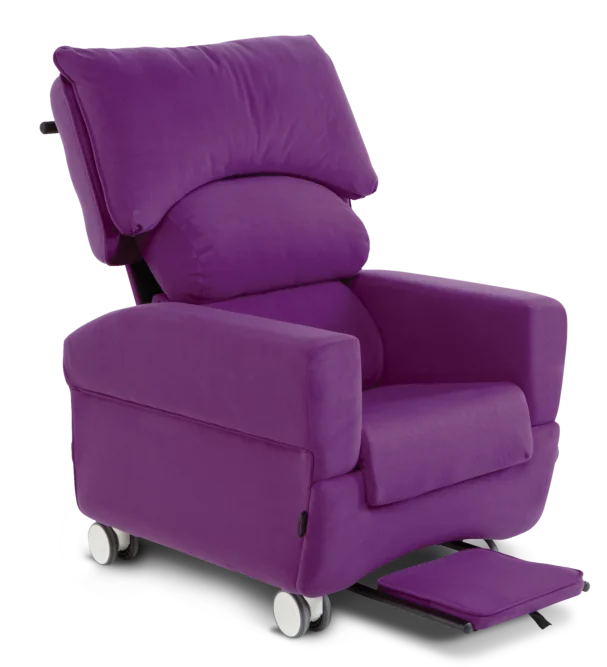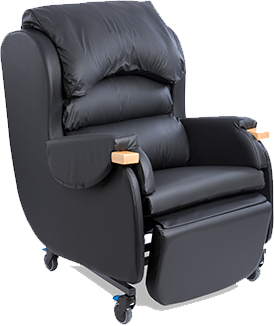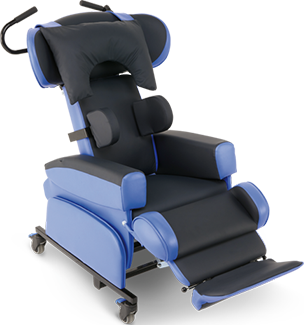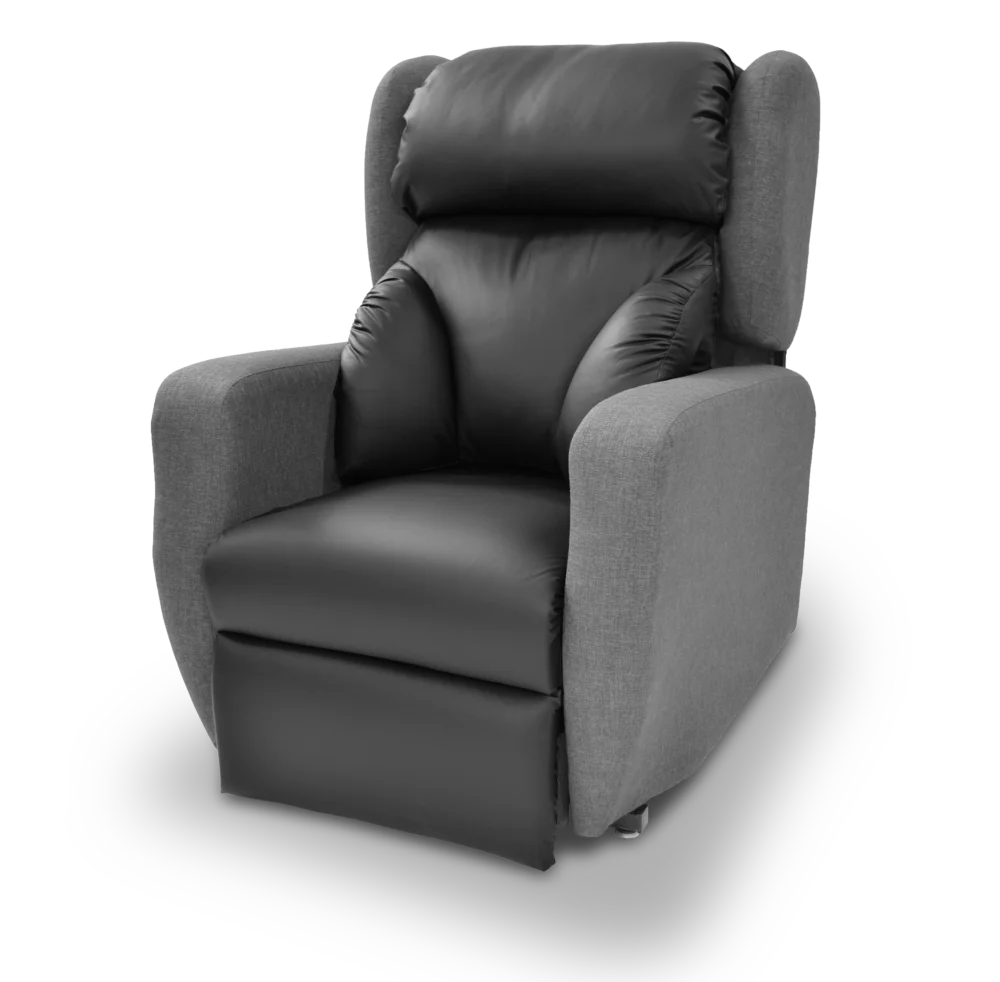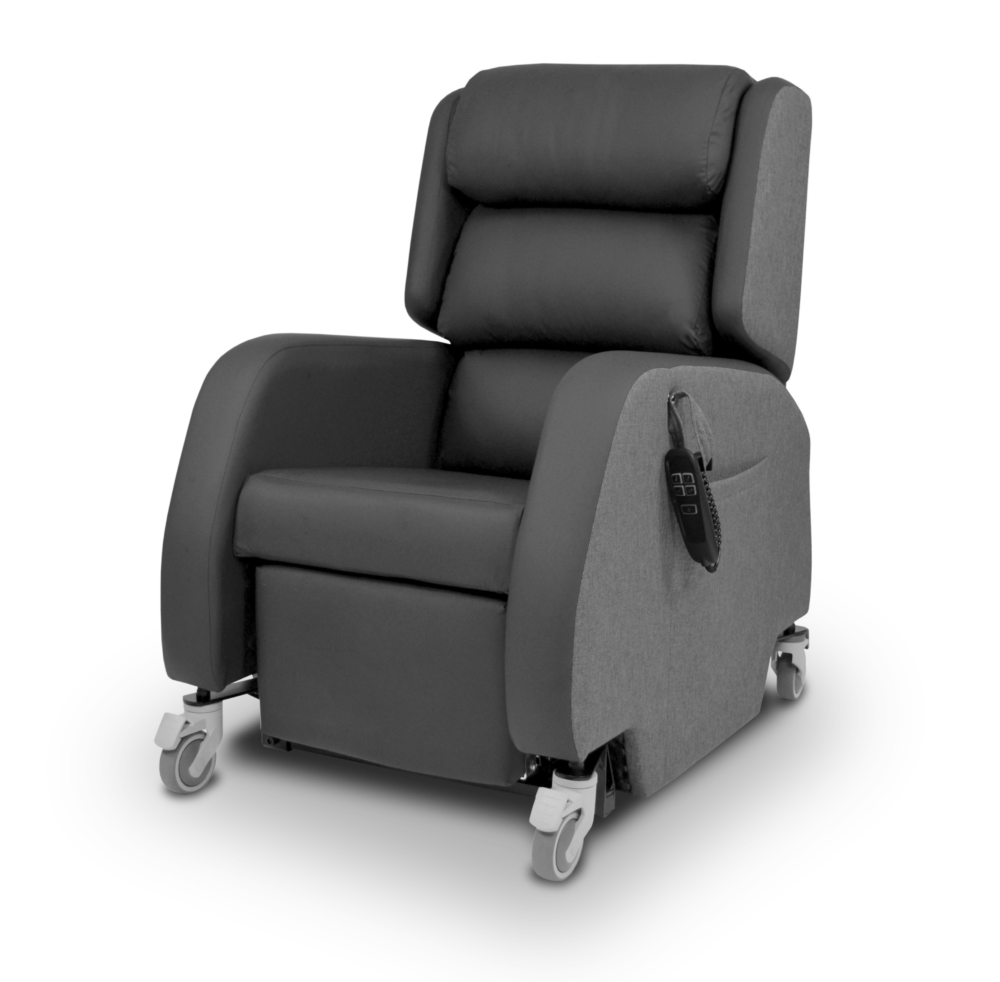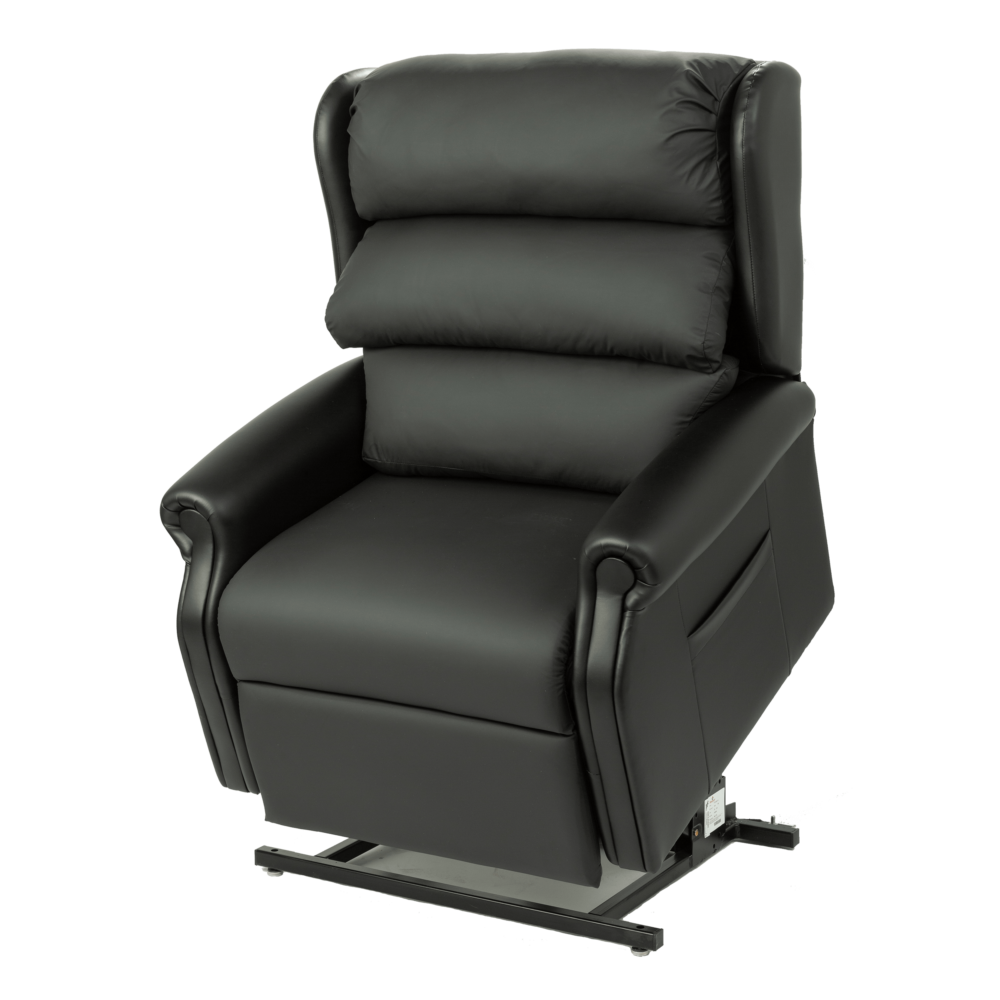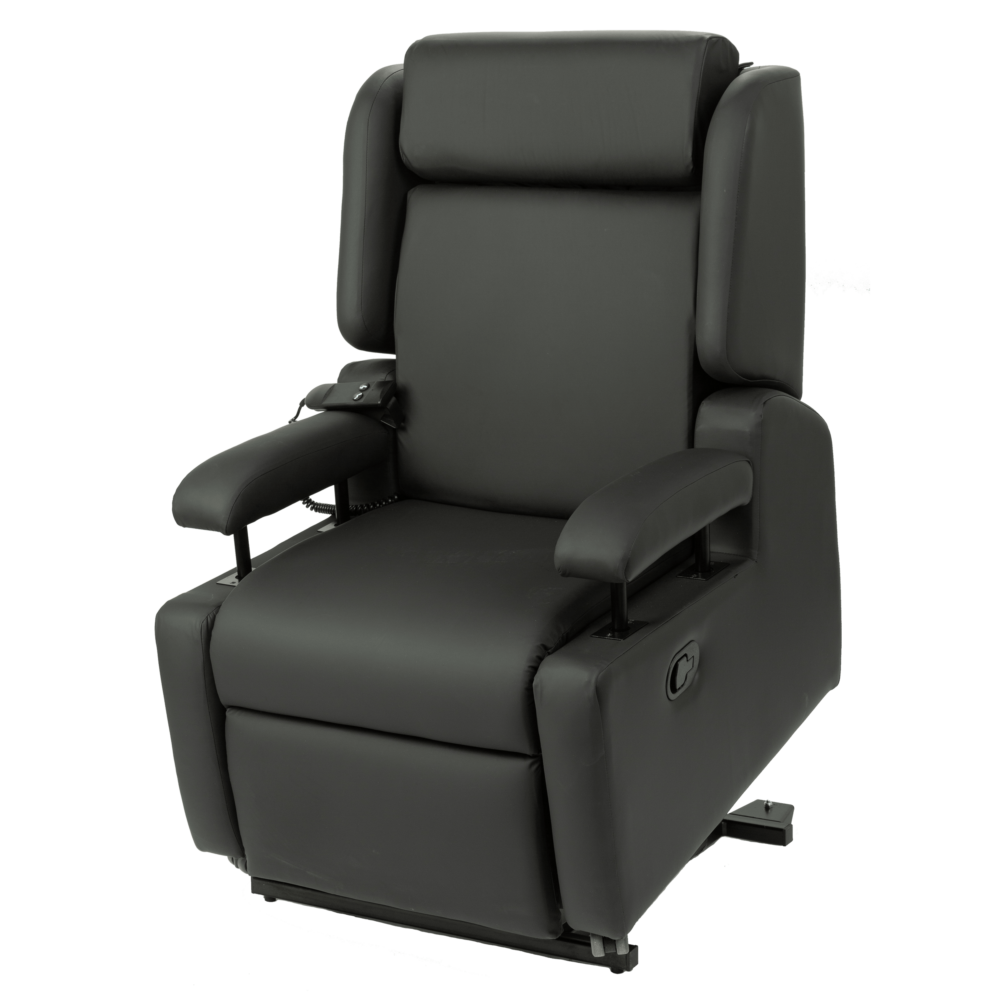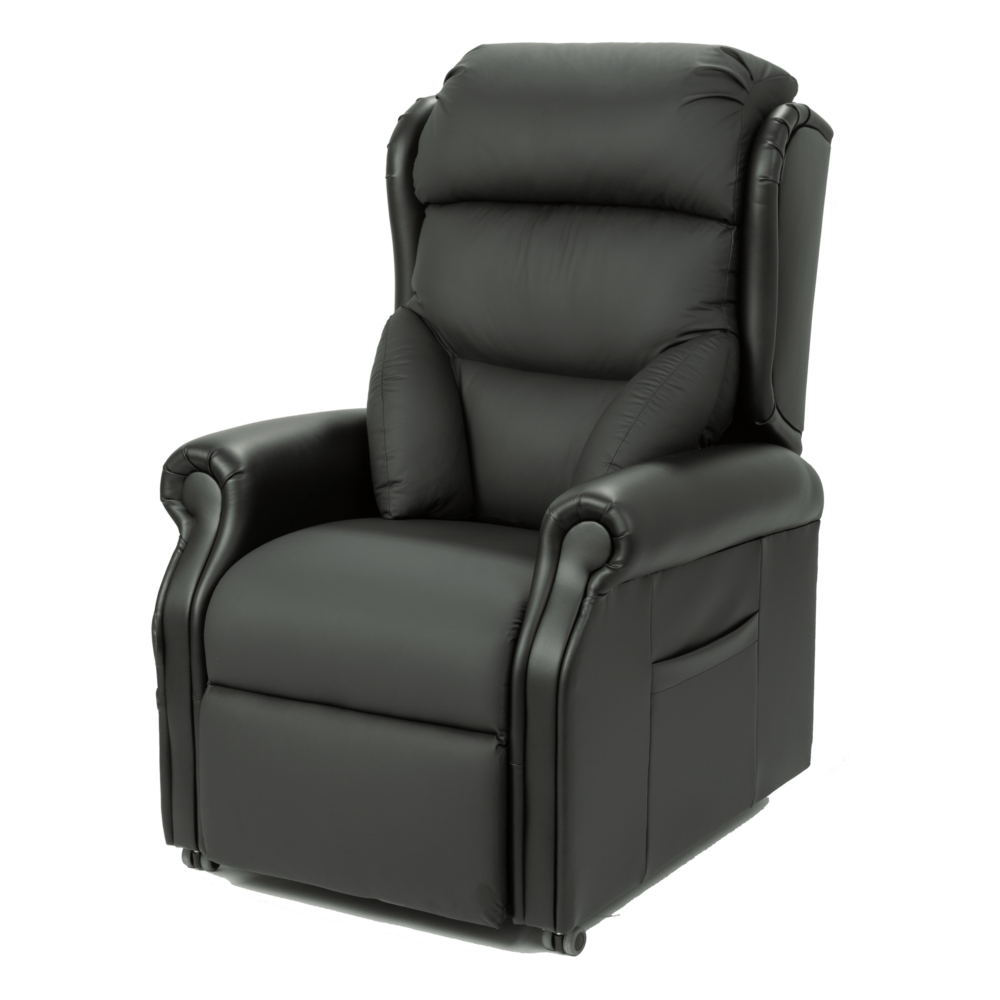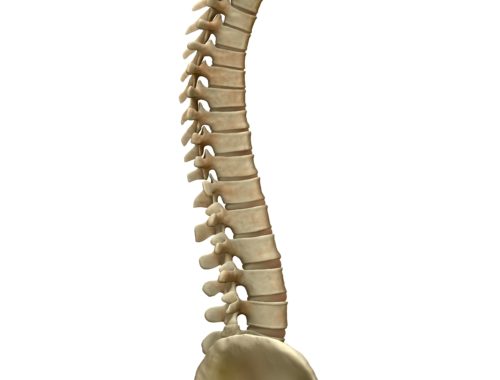Tilt in Space – When and How to Use Safely and Effectively
The tilt in space (TiS) function allows the seat-to-back angle to remain the same whilst the whole seating system is tilted backwards. This differs to back angle recline (BAR) whereby the seat-to-back angle adjusts to open up the hip angle.
TiS can assist with hoisting and positioning by utilising gravity to bring the pelvis down into the back of the chair; therefore, reducing the effort required by family and carers. TiS can also help manage energy levels by bringing an individual into a tilted resting position for a period of time to recuperate before returning upright to continue with activities of daily living.
Posture and pressure are inextricably linked
Body posture and positioning have a direct influence on the pressure going through specific body sites (Sprigle & Sonenblum 2011). Postural asymmetry and poor control can increase this pressure. Therefore, posture must be considered, and an individual helped to achieve the most symmetrical and supported posture possible, when devising pressure care programmes. A comprehensive assessment must be completed to identify the problems, then solutions need to be introduced to address these problems.
No single piece of equipment can ensure optimum pressure care!
Pressure care must be holistic, taking in to consideration all aspects of the individual’s daily life, and must address the intrinsic and extrinsic factors affecting pressure injury risk.
| Intrinsic factors | Extrinsic factors |
| Ensure diagnostic testing
Treatment and management plans followed Medication administered as prescribed Consider nutritional status Manage continence |
Ensure appropriate pressure relief
Reduce risk of external forces Ensure appropriate equipment selection Comfortable and safe environment Regular change of position |
TiS can play a key part in pressure care
TiS can be considered as part of the chair prescription to achieve effective posture and pressure care management. Repositioning an individual against the forces of gravity in different degrees of tilt can redistribute pressure and ultimately reduce the risk of pressure injury. A small tilt under 15° can be used to adjust pressure distribution through the back (Aissaoui et al. 2001). A greater posterior seat tilt of 20° can reduce pressures under the pelvis (Michael et al. 2007).
It is not about achieving the maximum angle possible, it is what you do with the angles that matters.
- The body can only withstand high interface pressures for a very short period of time, and it is when the pressure is not regularly relieved that pressure injuries can develop (Waterlow 2007).
- Individuals who have been assessed as being at risk of developing pressure injuries should be encouraged to change their position frequently (NICE 2014).
- Repositioning while seated is necessary to reduce the pressure on different body sites (Sprigle & Sonenblum 2011).
- TiS can be used as part of a repositioning programme to achieve this necessary reduction in pressure.
- There is no benefit in achieving a significant tilt angle if the individual is going to stay in this position for a prolonged period of time.
- The individual needs to move through different tilt angles to achieve regular and effective redistribution of pressure.
The frequency and extent of repositioning should always reflect the individual, their equipment, their support needs, and the environment.
TiS and BAR can be used together to manage posture and pressure effectively.
Often, the TiS and BAR functions are most effective when used in conjunction. If BAR is required to accommodate reduced hip range of movement then using TiS and BAR in combination can reduce the shear and friction forces that might otherwise be present when using BAR alone.
There may be a tendency for the individual to slide forward in the seat; therefore, TiS can help maintain pelvic stability and postural control by utilising gravity to keep the pelvis at the back of the chair.
In terms of pressure care, a 25° tilt combined with 120° recline can be effective in providing both muscle and skin perfusion at the ischial tuberosities (Jan et al. 2013).
Always be aware that there are times when TiS may be contra-indicated, or its use needs to be fully risk assessed and closely monitored, including for those with swallowing difficulties, those who require the use of a tray, or those with catheters. A comprehensive multi-disciplinary holistic assessment is vital.
CareFlex Clinical Specialist, Becca
Rebecca Dunstall BSc Physiotherapy (Hons)
References
- 1. Aissaoui R, Lacoste M, Dansereau J (2001) Analysis of sliding and pressure distribution during a repositioning of persons in a simulator chair Transactions on Neural Systems and Rehabilitation Engineering 9(2):215-24
- 2. Jan YK, Crane BA, Liao F, Woods JA, Ennis WJ (2013) Comparison of muscle and skin perfusion over the ischial tuberosities in response to wheelchair tilt-in-space and recline angles in people with spinal cord injuryArchives of Physical Medicine and Rehabilitation 94(10):1990-6
- 3. Michael SM, Porter D, Pountney TE (2007) Tilted seat position for non-ambulant individuals with neurological and neuromuscular impairment: A systematic review Clinical Rehabilitation 21(12):1063-1074
- 4. National Institute for Health and Care Excellence (2014) [CG179] Pressure ulcers: prevention and management Available from: www.nice.org.uk/guidance/cg179
- 5. Sprigle S, Sonenblum S (2011) Assessing evidence supporting redistribution of pressure for pressure ulcer prevention: A review Journal of Rehabilitation Research and Development 48(3):203-14
- 6. Waterlow (2007) Pressure Ulcers Available from: http://www.judy-waterlow.co.uk

